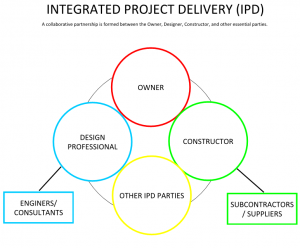Project Delivery Methods
Bukacek Construction is committed to providing the highest quality service to our clients with an ultimate goal of delivering a product our customers are thrilled with and can be proud of for years to come. We recognize that each and every project is unique and requires flexibility from the entire team.
By recognizing the diversity of our clients and their needs, Bukacek Construction focuses on offering the most efficient and effective project delivery methods.
Design-Bid-Build
The owner hires a designer who prepares a full set of drawings and specifications. The design is bid out and a General Contractor (GC), who is typically the lowest responsible bidder, is awarded the contract.
Advantages:
- Perceived to be the lowest possible construction pricing
- Pricing is a fixed cost at the start of the project
Disadvantages:
- Requires significant owner resource and expertise
- The owner is at risk for design errors and project pricing may lead to added unknown costs and multiple change orders
- Because the project must be fully designed prior to awarding a General Contractor to begin work, schedule delays may be incurred
- There is no contractor input during design which could otherwise reduce overall project cost and delays
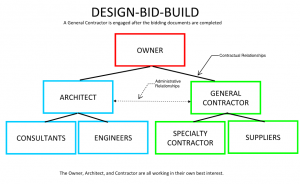
Construction Management
The Owner hires a designer to prepare the design and a construction manager to assist with cost, schedule and constructability. The construction manager then hires contractors to complete the work. The Construction manager can be hired as the “Agent” (CM-A) where the CM acts as the owner’s agent and all constructor contracts are held by the Owner or as the “Constructor” (CM-C) where the CM holds the specialty contracts and generally provides the Owner with a Guaranteed Maximum Price (GMP).
Advantages:
- Construction activities can start prior to the completion of the project design which reduces the schedule duration
- Cost control can be implemented during the design evolution via regularly scheduled budget updates
- Competitive bidding of specialty subcontracts reduces costs
- Design quality is elevation and construction costs are reduced through regular CM reviews for constructability
- Construction fees are lower due to the reduced risks associated with the contract structure
- Transparent accounting
Disadvantages:
- Costs are capped, not fixed at the start of construction and are subject to variations in the quality of the design documents
- Design changes after the start of construction may be elevated
- Under the CM-A method, the Owner will have additional administrative requirements for contracting and accounts payable
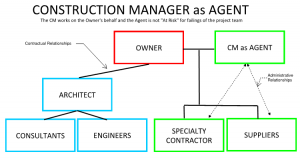
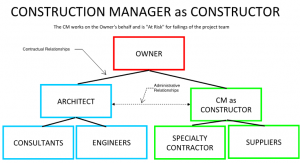
Design Build
The Owner hires a team that has both construction and design responsibilities to deliver the project.
Advantages:
- Design / Builder is the sole source of responsibility for the project
- Design generally produces best value construction processes
- Can be faster to market with the work
- Reduces design change orders
Disadvantages:
- Lacks checks and balances over quality of the finished product and financial expenditures
- Design / Builder can reduce scope to accommodate budget requirements
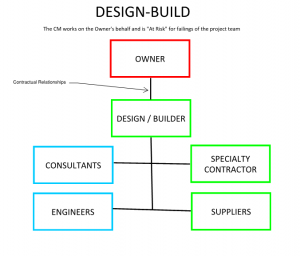
Integrated Project Delivery
The Owner, contractor(s) and designer(s) create a multi-party contract that develops targets for the budget, quality and schedule of the project. The integrated team then shares in the project risk and net profits achieved.
Advantages:
- Creates a highly collaborative team to render optimal project value
- All information is openly shared
Disadvantages:
- Creation of multilateral team contracts and acceptance of the project goals can be difficult
- Loss of control due to the process being managed collectively by the team
